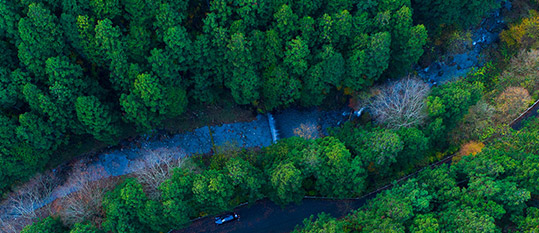Not all carbon offsets are created equal

By Katie Woodhouse
As the world grapples with climate change, reducing greenhouse gas emissions (GHG) is at the forefront of global conversations. Carbon offsets have emerged as one tool to help tackle this problem. They offer a way for individuals and businesses to balance out their emissions by investing in projects that reduce or capture GHGs elsewhere.
Put simply, carbon offsets let you make up for your emissions by funding projects that remove or reduce an equivalent amount of carbon dioxide (CO₂) from the atmosphere. So, for example, if you take a flight that can’t be avoided, you could buy carbon offsets that support reforestation or renewable energy projects to “cancel out” the GHGs associated with your flight.
However, there’s a catch – not all carbon offsets are created equal. If we want to make a real difference, we need high-quality carbon offsets that deliver genuine, long-term benefits for the climate that are only used for residual emissions that remain after all feasible direct emission reduction actions have been taken.
The problem with low-quality carbon offsets
While carbon offsets can play an important role in providing flexibility and reducing the cost of a GHG reduction programme, the reality is that most offsets don’t live up to this promise. Low-quality carbon offsets can do more harm than good, for several reasons:
- Lack of additionality: This is when a project would have happened anyway without the funding from carbon offsets. If the offset doesn’t lead to extra emission reductions, then the extra capital is wasted.
- Permanence issues: Some projects, like tree planting, sound great, but what if those trees are cut down or destroyed later? The carbon they captured gets released back into the atmosphere, removing the initial benefit. This risk is all too evident in many areas of the world. In California this summer, 45,000 acres of trees that had been allocated for conservation and sold as carbon credits were destroyed in wildfires.
- Weak monitoring: Without strong oversight, it’s hard to know if the projects are doing what they claim. Poor-quality offsets often lack the proper checks to make sure emissions are really being reduced. For example, an FT investigation found that a Shell-operated carbon capture project in Alberta registered carbon credits equivalent to double the amount of GHGs that were actually being captured by the facility.
Carbon offset best practice
A current debate in the industry revolves around when and how much a company should offset its emissions. The Science Based Targets initiative (SBTi) has traditionally taken a strict view on offsets, requiring companies to meet emission reduction targets primarily through direct reductions in their operations and supply chains. Offsets have been permitted only for residual, unavoidable emissions. And even here they have been limited to 10% of base-year emissions.
However, the SBTi recently announced an intention to revise its Corporate Net-Zero standard to enable an increased use of carbon offsets by companies to meet their goals. This prompted an immediate backlash from both SBTi employees and signatories concerned with greenwashing. In response, the SBTi clarified that no immediate changes to the standard had been made.
At WHEB, we believe that a reliance on offsets without a strong commitment to reducing emissions can delay meaningful climate action. We encourage all of our portfolio companies to research credible offsetting providers and to use offsets as a last resort, rather than a tool to postpone the more difficult task of reducing emissions. For example, we recently engaged with Arcadis, an environmental consultancy firm held in our strategy. Arcadis currently offsets all scope 1 and 2 emissions, and its management has confirmed that they will be “ramping up” efforts to directly reduce emissions to meet a 90% reduction target by 2035, with the remaining 10% of emissions covered by carbon offset projects.
Our Offsetting Partners
WHEB’s approach to offsetting our operational emissions, is based on a review we conducted in 2023 to identify high-quality projects and providers that we could partner with on a long-term basis. In the end we chose two providers to offset our residual emissions.
Make it Wild: Make it Wild is a family-run business that purchases degraded agricultural land across North Yorkshire in the UK to regenerate natural woodland and create wetland habitats. As credits are sold, new trees are planted, photographed and mapped by drone and allocated to each buyer. The amount of carbon sequestered is based on research from the University of Leeds and the drone mapping process prevents double-counting.
Wilder Carbon: Wilder Carbon is a not-for-profit organisation that provides high-integrity, nature-based carbon offsets to buyers who are demonstrably reducing their own emissions. Wilder Carbon conducted due diligence on us as a potential purchaser of offsets. The process ensures that Wilder Carbon only work with organisations that align with the Wilder Carbon principles. The projects available on the Wilder Carbon platform all deliver multiple benefits such as locking up carbon and regenerating biodiversity as well as benefiting local people and communities, for example through flood prevention. The projects are externally validated to ensure the projects meet the Wilder Carbon Standards as well as their carbon and biodiversity uplift targets.
As more companies look to carbon offsets to meet their climate goals, we encourage buyers to focus on quality over quantity. Offset buyers should have access to detailed information about the projects they’re supporting. Whilst no carbon credit is perfect, knowing how emissions reductions are calculated, verified, and monitored is key to making sure the offsets used are effective.

